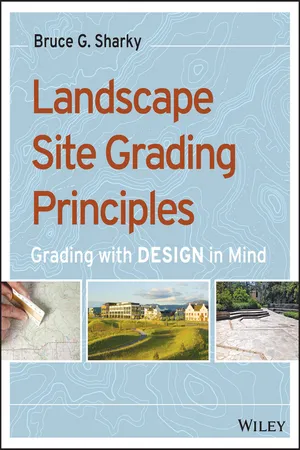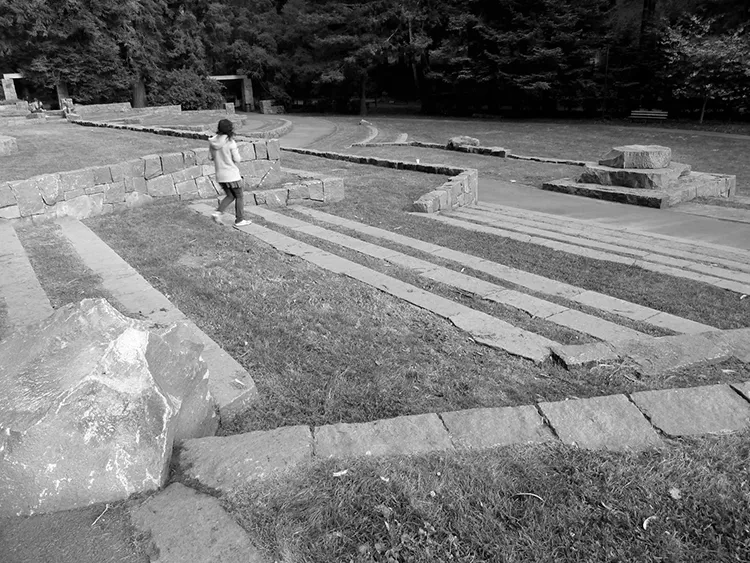
- English
- ePUB (mobile friendly)
- Available on iOS & Android
About this book
A complete guide to site grading for designers and other visual learners
Grading With Design in Mind: Landscape Site Grading Principles is a comprehensive guide to grading, written specifically from the design perspective. Heavily illustrated and non-technical, this book meets the needs of designers and visual learners by presenting the principles and methods of site grading with less emphasis on engineering, and a strong focus on the effect on the overall aesthetic. Written by a professor in America's number-one ranked undergraduate landscape architecture program, the book guides readers step-by-step through the process of solving various grading problems in real-life scenarios.
Landscape designers, landscape architects, and engineers need to have a deep understanding of site grading as the foundation of any project. Grading plans must not only solve practical requirements, but also create landforms that contribute to the aesthetic ambition of the overall site and architectural design concept. Grading With Design in Mind takes a highly visual approach to presenting modern grading techniques and considerations, providing designers the guidance they need to become competent in site grading while understanding the design implications of the subject. Features include:
- Numerous illustrations to support the text
- Step-by-step examples
- Professional grading plans
Studying the professional grading plans helps readers better understand the real-world application of grading principles in different situations. Site grading is a complicated topic with plenty of on-site variables, but Grading with Design in Mind breaks it down into clear, concise instruction with value to both professionals and students in the field of landscape design.
Frequently asked questions
- Essential is ideal for learners and professionals who enjoy exploring a wide range of subjects. Access the Essential Library with 800,000+ trusted titles and best-sellers across business, personal growth, and the humanities. Includes unlimited reading time and Standard Read Aloud voice.
- Complete: Perfect for advanced learners and researchers needing full, unrestricted access. Unlock 1.4M+ books across hundreds of subjects, including academic and specialized titles. The Complete Plan also includes advanced features like Premium Read Aloud and Research Assistant.
Please note we cannot support devices running on iOS 13 and Android 7 or earlier. Learn more about using the app.
Information
Chapter 1
Some Background on the Subject of Site Grading
Site Grading Informs Design






Let’s Begin

The Importance of Grading in Design
Table of contents
- Cover
- Titlepage
- Copyright
- Dedication
- Preface
- Chapter 1: Some Background on the Subject of Site Grading
- Chapter 2: Site Grading and the Legal Requirements
- Chapter 3: Site Planning and Grading Process
- Chapter 4: Drawing Conventions
- Chapter 5: What Is Scale, Why Is It Important, and How Is It Used?
- Chapter 6: Where Are You?
- Chapter 7: Contours
- Chapter 8: Signature Landforms
- Chapter 9: Calculating Slope and Other Grading Calculations: Tools for Gaining Mastery in Grading
- Chapter 10: How to Calculate Spot Elevations
- Chapter 11: Working with Contours: Creating Landforms with Design in Mind
- Chapter 12: Signature Solutions
- Chapter 13: Detailed Grading with Slopes, Contours, and Spot Elevations
- Chapter 14: Storm and Surface Water Drainage Management
- Chapter 15: Estimating Volume of Cut and Fill Using Contour Method
- Chapter 16: Professional Example of Site Grading by Design
- References
- End-User License Agreement